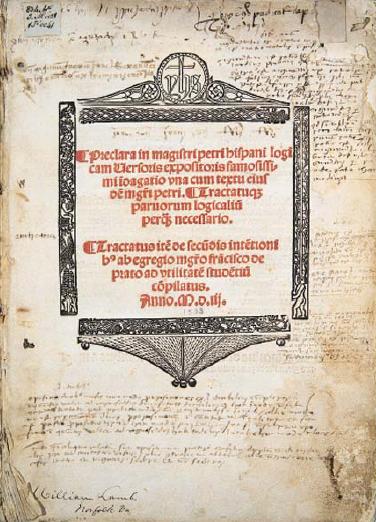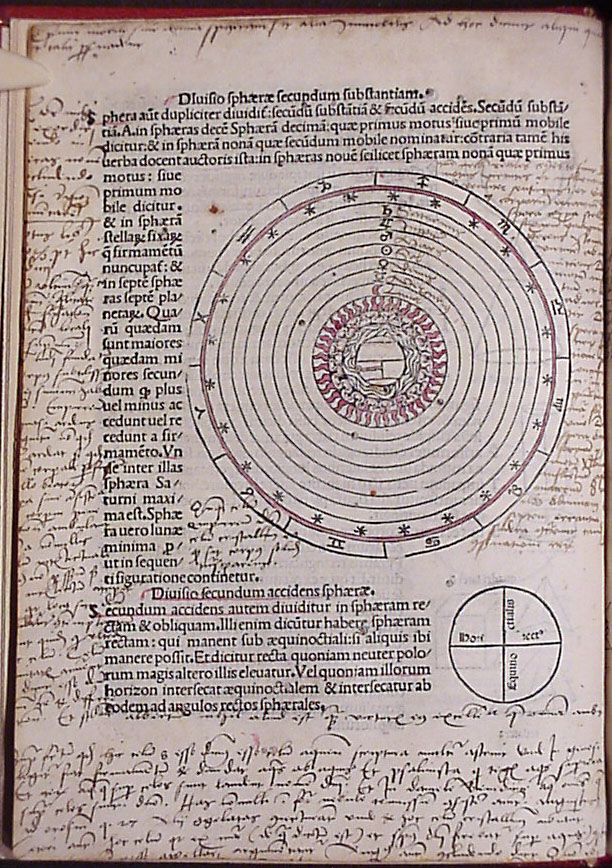|
Johannes Von Gmunden
:''Johannes von Gmünd is also the name of a 14th-century architect, see Basel Münster.'' Johannes von Gmunden ( la, Johannes de Gamundia; c. 1380/84 – February 23, 1442) was a German/Austrian astronomer, mathematician, humanist and early instrument maker. Biography Johannes von Gmunden received the degree of a Master of Arts at the University of Vienna in 1406. From 1408, he was a lecturer at Vienna, lecturing on Aristotle's ''Physics'' (1408) and ''Meteora'' (1409, 1411), Peter of Spain (1410) and ''Algorismus de minutiis'' (1412). He fell seriously ill in 1412. In 1415 and 1416 studied theology, completing a Bachelor of Theology in 1416.Christoph Schöner, ''Mathematik und Astronomie an der Universität Ingolstadt im 15. und 16. Jahrhundert'', Duncker & Humblot, 1994, p. 69. He continued lecturing only in 1419, on ''algorismus de integris''. From 1420, Johannes was permitted to restrict his teaching to the specialized field of the mathematics of astronomy, focusing on Euc ... [...More Info...] [...Related Items...] OR: [Wikipedia] [Google] [Baidu] |
Basel Münster
Basel Minster (German: ''Basler Münster'') is a religious building in the Swiss city of Basel, originally a Catholic cathedral and today a Reformed Protestant church. The original cathedral was built between 1019 and 1500 in Romanesque and Gothic styles. The late Romanesque building, destroyed by the 1356 Basel earthquake, was rebuilt by Johannes Gmünd, who was at the same time employed for building the Freiburg Münster. Ulrich von Ensingen, architect of the towers at the Ulm Minster and the Strasbourg Cathedral, extended the building from 1421. Hans Nußdorf completed the southern Martinstower (after St.Martin) in 1500. One of the main landmarks and tourist attractions of Basel, it adds definition to the cityscape with its red sandstone architecture and coloured roof tiles, its two slim towers and the cross-shaped intersection of the main roof. The Swiss inventory of cultural property of national and regional significance lists the Münster as a heritage site of nati ... [...More Info...] [...Related Items...] OR: [Wikipedia] [Google] [Baidu] |
Peter Of Spain (author)
__NOTOC__ Peter of Hispania ( la, Petrus Hispanus; Portuguese and es, Pedro Hispano; century) was the author of the ', later known as the ', an important medieval university textbook on Aristotelian logic. As the Latin ''Hispania'' was considered to include the entire Iberian Peninsula, he is traditionally and usually identified with the medieval Portuguese scholar and ecclesiastic Peter Juliani, who was elected Pope John XXI in 1276. The identification is sometimes disputed, usually by Spanish authors, who claim the author of the ' was a Castilian Blackfriar. He is also sometimes identified as Petrus Ferrandi Hispanus ( 1254 1259). Life The author of the ' is assumed to have studied under John Pagus. Philosophical works There are a large volume of manuscripts and printed editions of the ', indicative of its great success throughout European universities well into the seventeenth century. The most recent edition is Peter of Hispania (Petrus Hispanus Portugalensis), ' ... [...More Info...] [...Related Items...] OR: [Wikipedia] [Google] [Baidu] |
Astrolabe
An astrolabe ( grc, ἀστρολάβος ; ar, ٱلأَسْطُرلاب ; persian, ستارهیاب ) is an ancient astronomical instrument that was a handheld model of the universe. Its various functions also make it an elaborate inclinometer and an analog calculation device capable of working out several kinds of problems in astronomy. In its simplest form it is a metal disc with a pattern of wires, cutouts, and perforations that allows a user to calculate astronomical positions precisely. Historically used by astronomers, it is able to measure the altitude above the horizon of a celestial body, day or night; it can be used to identify stars or planets, to determine local latitude given local time (and vice versa), to survey, or to triangulate. It was used in classical antiquity, the Islamic Golden Age, the European Middle Ages and the Age of Discovery for all these purposes. The astrolabe's importance comes not only from the early developments into the study of astron ... [...More Info...] [...Related Items...] OR: [Wikipedia] [Google] [Baidu] |
Asteroid
An asteroid is a minor planet of the inner Solar System. Sizes and shapes of asteroids vary significantly, ranging from 1-meter rocks to a dwarf planet almost 1000 km in diameter; they are rocky, metallic or icy bodies with no atmosphere. Of the roughly one million known asteroids the greatest number are located between the orbits of Mars and Jupiter, approximately 2 to 4 AU from the Sun, in the main asteroid belt. Asteroids are generally classified to be of three types: C-type, M-type, and S-type. These were named after and are generally identified with carbonaceous, metallic, and silicaceous compositions, respectively. The size of asteroids varies greatly; the largest, Ceres, is almost across and qualifies as a dwarf planet. The total mass of all the asteroids combined is only 3% that of Earth's Moon. The majority of main belt asteroids follow slightly elliptical, stable orbits, revolving in the same direction as the Earth and taking from three to six years to comple ... [...More Info...] [...Related Items...] OR: [Wikipedia] [Google] [Baidu] |
Schwäbisch Gmünd
Schwäbisch Gmünd (, until 1934: Gmünd; Swabian: ''Gmẽẽd'' or ''Gmend'') is a city in the eastern part of the German state of Baden-Württemberg. With a population of around 60,000, the city is the second largest in the Ostalb district and the whole East Württemberg region after Aalen. The city is a ''Große Kreisstadt'' since 1956, i.e. a chief city under district administration; it was the administrative capital of its own rural district until the local government reorganisation on 1 January 1973. There are some institutions of higher education in the city, most notably the Pädagogische Hochschule Schwäbisch Gmünd (University of Education Schwäbisch Gmünd) and the Landesgymnasium für Hochbegabte (State Highschool for gifted children). Schwäbisch Gmünd was a self-ruling free imperial city from the 13th century until its annexation to Württemberg in 1802. Geography Schwäbisch Gmünd is situated within the northern foothills of the Swabian Jura Mountains o ... [...More Info...] [...Related Items...] OR: [Wikipedia] [Google] [Baidu] |
Gmünd, Lower Austria
Gmünd ( cz, Cmunt) is a town in the northwestern Waldviertel region of Lower Austria and the capital of the Gmünd district. The municipality consists of the Katastralgemeinden ''Böhmzeil, Breitensee, Eibenstein, Gmünd'' and ''Grillenstein''. Situated on the Lainsitz (Lužnice) river where it forms the border with České Velenice in the Czech Republic, it is an important road and railway crossing point, next to the Blockheide protected area. The development of the town, first mentioned in a 1208 deed, was decisively pushed by the inauguration of the Emperor Franz Joseph Railway from Vienna to Prague in 1869. By the 1919 Treaty of Saint-Germain its northern part Dolní Velenice, German: ''Unterwielands'', with the main station was awarded to Czechoslovakia, forming the new town of České Velenice. Politics Seats in the municipal assembly ''(Gemeinderat)'' as of 2005 elections: * Social Democratic Party of Austria (SPÖ): 16 * Austrian People's Party (ÖVP): 11 *Freedom Par ... [...More Info...] [...Related Items...] OR: [Wikipedia] [Google] [Baidu] |
Upper Austria
Upper Austria (german: Oberösterreich ; bar, Obaöstareich) is one of the nine states or of Austria. Its capital is Linz. Upper Austria borders Germany and the Czech Republic, as well as the other Austrian states of Lower Austria, Styria, and Salzburg. With an area of and 1.49 million inhabitants, Upper Austria is the fourth-largest Austrian state by land area and the third-largest by population. History Origins For a long period of the Middle Ages, much of what would become Upper Austria constituted Traungau, a region of the Duchy of Bavaria. In the mid-13th century, it became known as the Principality above the Enns River ('), this name being first recorded in 1264. (At the time, the term "Upper Austria" also included Tyrol and various scattered Habsburg possessions in South Germany.) Early modern era In 1490, the area was given a measure of independence within the Holy Roman Empire, with the status of a principality. By 1550, there was a Protestant majority. In 1564, ... [...More Info...] [...Related Items...] OR: [Wikipedia] [Google] [Baidu] |
Canon (priest)
A canon (from the Latin , itself derived from the Greek , , "relating to a rule", "regular") is a member of certain bodies in subject to an ecclesiastical rule. Originally, a canon was a cleric living with others in a clergy house or, later, in one of the houses within the precinct of or close to a cathedral or other major church and conducting his life according to the customary discipline or rules of the church. This way of life grew common (and is first documented) in the 8th century AD. In the 11th century, some churches required clergy thus living together to adopt the rule first proposed by Saint Augustine that they renounce private wealth. Those who embraced this change were known as Augustinians or Canons Regular, whilst those who did not were known as secular canons. Secular canons Latin Church In the Latin Church, the members of the chapter of a cathedral (cathedral chapter) or of a collegiate church (so-called after their chapter) are canons. Depending on the title ... [...More Info...] [...Related Items...] OR: [Wikipedia] [Google] [Baidu] |
Astronomical Tables
In astronomy and celestial navigation, an ephemeris (pl. ephemerides; ) is a book with tables that gives the trajectory of naturally occurring astronomical objects as well as artificial satellites in the sky, i.e., the position (and possibly velocity) over time. Historically, positions were given as printed tables of values, given at regular intervals of date and time. The calculation of these tables was one of the first applications of mechanical computers. Modern ephemerides are often provided in electronic form. However, printed ephemerides are still produced, as they are useful when computational devices are not available. The astronomical position calculated from an ephemeris is often given in the spherical polar coordinate system of right ascension and declination, together with the distance from the origin if applicable. Some of the astronomical phenomena of interest to astronomers are eclipses, apparent retrograde motion/planetary stations, planetary es, sidereal time, ... [...More Info...] [...Related Items...] OR: [Wikipedia] [Google] [Baidu] |
Georg Pruneck
{{disambiguation ...
Georg may refer to: * ''Georg'' (film), 1997 *Georg (musical), Estonian musical * Georg (given name) * Georg (surname) * , a Kriegsmarine coastal tanker See also * George (other) George may refer to: People * George (given name) * George (surname) * George (singer), American-Canadian singer George Nozuka, known by the mononym George * George Washington, First President of the United States * George W. Bush, 43rd President ... [...More Info...] [...Related Items...] OR: [Wikipedia] [Google] [Baidu] |
John Holywood
Johannes de Sacrobosco, also written Ioannes de Sacro Bosco, later called John of Holywood or John of Holybush ( 1195 – 1256), was a scholar, monk, and astronomer who taught at the University of Paris. He wrote a short introduction to the Hindu-Arabic numeral system. Judging from the number of manuscript copies that survive today, for the next 400 years it became the most widely read book on that subject. He also wrote a short textbook which was widely read and influential in Europe during the later medieval centuries as an introduction to astronomy. In his longest book, on the computation of the date of Easter, Sacrobosco correctly described the defects of the then-used Julian calendar, and recommended a solution similar to the modern Gregorian calendar three centuries before its implementation. Very little is known about the education and biography of Sacrobosco. For one thing, his year of death has been guessed at 1236, 1244, and 1256, each of which is plausible and ... [...More Info...] [...Related Items...] OR: [Wikipedia] [Google] [Baidu] |





